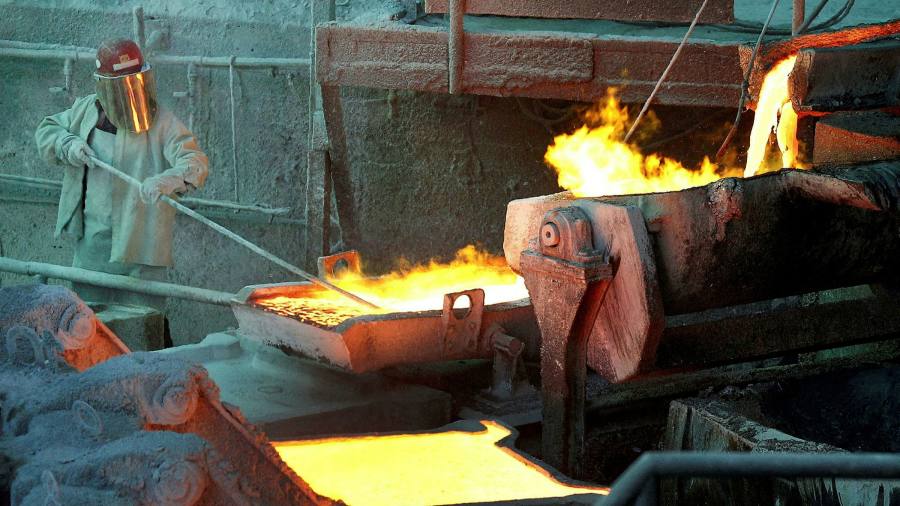Copper dropped below $8,000 a tonne for the first time in almost 18 months on Friday as mounting fears of recession weigh on the world’s most important industrial metal.
Widely regarded as a gauge of economic activity because of its use in everything from household appliances to electric vehicles, the metal fell as much 3 per cent to $7,959 a tonne, leaving it on course for its fourth consecutive weekly decline.
Other metals also opened the third quarter on a gloomy note, with nickel down 3 per cent and aluminium off 2 per cent despite data that showed a pick-up in factory activity in China, the world’s biggest consumer of raw materials.
“This suggests the market views the improvement as not enough to offset the potential slowdown in developed economies,” strategists at ANZ said in a report.
Concerns that demand will be crimped by central banks rapidly raising interest rates to curb inflation and, in turn, slowing economic growth, saw London Metal Exchange’s six main contracts register in the April to June period their worst quarter since the global financial crisis in 2008.

That was a marked change from conditions earlier in the year when copper traded at a record above $10,600 a tonne on the back of supply disruptions and booming demand as lockdown restrictions eased.
Before and during that period many generalist investors bought copper, believing that prices would be underpinned by a lack of new supply projects in the pipeline and rising demand from the electric vehicle industry and also from the makers of wind turbines and solar panels.
While that narrative is still expected to play out — albeit later in the decade — the prospect of a hard economic landing in the US and Europe has investors running scared.
In a report, Marex, a major commodities brokerage, said “money flows” were the main factor driving losses across the industrial metals landscape. That view was echoed by analysts.
“It is a sell-off by macro funds,” said Tom Price, head of commodities strategy at Liberum. “We are seeing a similar pullback across energy, metals and gold has gone below $1,800 an ounce. It’s across the board. People are withdrawing money from the sector.”
FT survey: How are you handling higher inflation?

We are exploring the impact of rising living costs on people around the world and want to hear from readers about what you are doing to combat costs. Tell us via a short survey.
Despite the storm clouds gathering above the global economy, Colin Hamilton, commodities analyst at BMO Capital Markets, said copper market fundamentals were still healthy with the latest industry surveys pointing to end-user demand in developed markets remaining robust, for now.
Price agreed: “If I just look at trade flows, particularly into China, consumption rates, premium signals, inventory levels I would say this looks like a tight, balanced market. But that’s not what the price is telling you.”
Copper bulls are now pinning their hopes on China and a pick-up in demand as Covid-19 cases decline and policymakers look to boost economies through stimulus packages.
“There is always hope that China will save the day through a massive infrastructure stimulus package,” said Jean-Sébastien Jacques, former chief executive of Rio Tinto on LinkedIn. ”
“It has happened a few times in the past, but is hope a strategy? No must be the answer. In any case the timing of such a stimulus package is highly uncertain and would likely require some material debt increase at a local or provincial level.”


